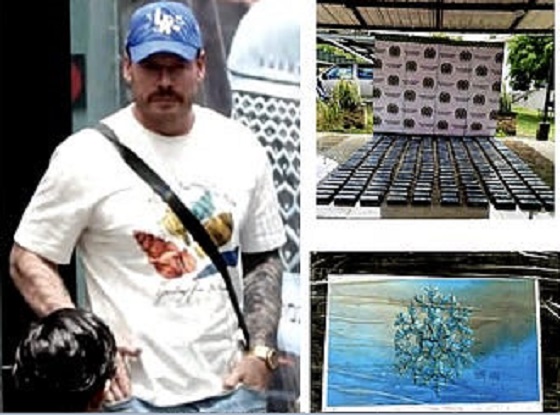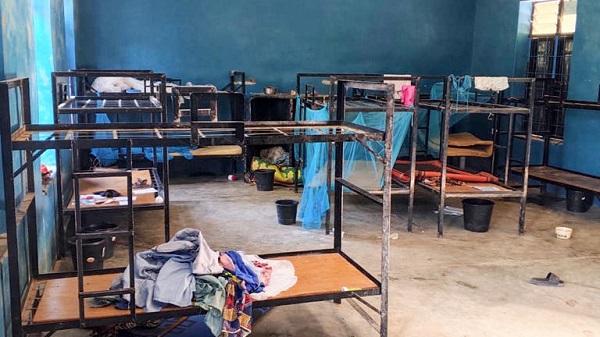Crime
Could the UK’s ‘Grooming Gangs’ operate in Canada?

From the Macdonald Laurier Institute
By Raheel Raza
Fear of being labelled a racist prevented UK officials from stopping the mass abuse of women by “grooming gangs.” Could the same happen in Canada?
If you asked Canadians what they know about the United Kingdom’s “grooming gangs” the majority would be clueless. So far, the issue has been an exclusively UK based scandal, with limited media coverage.
These so-called “grooming gangs” sexually exploited hundreds of vulnerable young women and girls across the UK for many years before their activities came to public attention in the early 2010s. In essence, because the perpetrators are largely groups of British-Pakistani men, the media, law enforcement, and officials failed in their duty to address or publicize the scandal for fear of being accused of racism. This is a truly tragic result of identity politics on a massive scale.
The victims were mostly female and white (although some Asian girls were also targeted). Many victims were underage, some were homeless or living in state children’s homes. Local social services officials knew many of the girls but stood by as the gangs exploited them – sometimes for years.
Media reports suggested that local law enforcement also knew some of the perpetrators but waited unreasonably long before making arrests and laying charges. Scores of men in different towns have since been arrested, tried and imprisoned for their actions. But hundreds roam free, even today.
Among the worst cases were gangs operating in the northern towns of Rotherham and Rochdale, but many others have been exposed around the country over the last decade-and-a-half: Oldham, Oxford, Telford, Peterborough, and others. Ministers and members of the opposition have acknowledged that similar gangs may still be operating.
The story came to international attention recently, due to intervention by Elon Musk, who tweeted in clear terms about the UK’s problems with racial integration. Prime Minister Keir Starmer is now grappling with the re-emergence of this long-running scandal.
GB News UK produced one of the most comprehensive and detailed exposes through an investigative documentary featuring exclusive interviews with survivors, whistleblowers, and activists. The documentary explains why the police and authorities have allowed such a significant cover up to persist for so long. There is evidence of a massive cover up by people who had infiltrated into social services, councils and law enforcement.
UK Safeguarding Minister Jess Phillips refused a request from Oldham City Council to launch a national inquiry into the issue and instead told the council it should mount a local one itself. But thankfully, UK Home Secretary Yvette Cooper has announced plans for a nationwide review and five government-backed local inquiries.
British academic Alexis Jay, a professor of social work and a child protection expert, concluded a multi-year public inquiry detailing how an organized gang abused girls as young as 11, trafficking them across the country and even picking them up from children’s care homes in taxis without any effort to hide what they were doing.
Jay found that “1,400 children had been sexually exploited, raped by multiple perpetrators, trafficked across other towns, abducted, beaten, and threatened with guns. Children had even been doused in petrol. Girls as young as 11 had been raped. Those reports a decade ago identified a failure to confront Pakistani heritage gangs and a ‘widespread perception’ that they should ‘downplay the ethnic dimensions’ for fear of being seen to be racist.”
Some UK Labour politicians previously said that fear of being labelled racist has created a taboo around saying there is a specific ethnicity of men, of Pakistani heritage, participating in sexual exploitation.
Among them is Sarah Champion, who represents of the areas where grooming gangs operated. She has campaigned consistently on the issue, and recently called for another national inquiry into grooming gangs, putting more pressure on Prime Minister Starmer.
Champion wrote an op-ed for a tabloid newspaper in which she stated: “Britain has a problem with British Pakistani men raping and exploiting white girls. There. I said it. Does that make me a racist? Or am I just prepared to call out this horrifying problem for what it is?”
Champion’s statement caused such an outrage – the Labour Party responded by shunning her – that she had to retract it from her article.
In 2023, then-Home Secretary Suella Braverman made several comments about the ethnicity of abusers in high-profile gangs. She said, “the perpetrators are groups of men, almost all British Pakistani.” She told the BBC the gangs “overwhelmingly” consisted of British Pakistani males.
Reports first surfaced about the groomer gangs more than a decade earlier. In September 2012, journalist Andrew Norfolk, chief investigative reporter for The Times, published an article based on a police report about the extent of the issue. It revealed that networks of mainly British Pakistani men were abusing children in Rotherham “on an unprecedented scale.”
Law authorities failed to prosecute suspects despite police and child protection agencies in Rotherham having had knowledge of these crimes for decades, the newspaper said.
To show that they were engaged, governments and agencies commissioned various reports, but no action was taken. In these reports, the criminals were referred to as “men of Asian heritage”!
Meanwhile Naz Shah, a Labour MP, retweeted, “Those abused girls in Rotherham and elsewhere just need to shut their mouths. For the good of diversity.” She later deleted her retweet and unliked the post.
In 2018, I was invited to the UK to give testimony in the House of Lords about the Sharia debate in Ontario. At the time, there was a rising number of Sharia Councils operating in the UK that were depriving many Muslim women of their rights.
During that visit I met a white woman named Toni Bugle. Bugle is founder of MARIAS – Mothers Against Radical Islam and Sharia. Bugle had been a victim of gang rape and abuse as a child (not by grooming gangs) so she paid close attention to the stories of victims of grooming gangs.
Bugle asked me if I would attend a conference that she set up at the UK Parliament where some of the grooming gang victims would tell their stories. She told me she needed a Muslim woman’s voice because when she tried to expose the stories, she was called a racist, bigot, and Islamophobe.
At Bugle’s conference (which had no media presence) I met some of the rape victims, including Caitlin, Samantha, and Torron. They were scared and insecure and spoke in soft voices, looking around constantly. Some of them showed visible signs of trauma and had bruises on their arms and faces. But they were brave enough to share their stories, which were absolutely horrendous. The shock gave me sleepless nights.
Bugle had also organized a rally outside the British Parliament with the victims and I was happy to join her to amplify the victims’ concerns about the authorities’ failure to stop the abuse.
Bugle told me “I realized that there was a massive issue with Muslim men of predominantly Pakistani and Bangladeshi ethnicity targeting predominantly young white working-class girls.” Bugle decided to reach out to the victims to help them and started to hear their stories. She continues to do that to this day:
“I always have my phone near me,” Bugle says, “These young girls can and do call me at anytime… I make myself available. If I had to give a number for how many girls I’ve helped, I would take a guess that via just the phone maybe fifty or sixty and more direct involvement approximately ten or fifteen young women. I have also helped many Muslim women who were facing the trauma of forced marriage and sharia councils – two of which I introduced at the conference.”
Hearing this, I was shocked as to why Muslim organizations in UK (especially women’s groups) did not condemn what was happening to their non-Muslim sisters or take any action? Imagine if this was the reverse and happened to Muslim women? All hell would have broken loose!
Bugle said that she had also been contacted by young girls for support. The first girl who reached out, Caitlin Spencer, eventually wrote a book titled, Please, let me go: the horrific true story of a girl’s life in the hands of sex traffickers.
From the age of 14, traffickers controlled Caitlin, raped her, and repeatedly sold and passed her on to new gangs across the UK. Her abusers were blatant in their attacks, often collecting her from school or home, to be taken to flats they owned, family homes, or hotels booked for the day.
Please, Let Me Go is Caitlin’s shocking story of abuse and survival. She writes, “I was trapped. I’d been raped so many times, abused by hundreds, if not thousands. They could have left every door open, and it would have made no difference. And I always came back – they always brought me back.”
Bugle says, “given that Caitlin still sees her abusers driving their taxis with impunity and that other victims similarly see perpetrators living freely and intimidating them, what will our government do to bring those perpetrators to justice?”
Bugle continues, “I have met girls who have been raped, defecated on, urinated on, had children from their abusers and often those children were taken away from these girls by social services. You can imagine the damage that did was devastating for the whole family.”
Another girl Bugle helped is Sarah, a 15 year old white girl. A journalist for the Daily Mail did a story on Sarah: a grooming gang coerced her to marry a gang member who effectively forced her into sex slavery after abducting her in a Tesco parking lot in an English suburb. Sarah’s captivity lasted for 12 years.
I asked Bugle why they didn’t go to court or the police. She says “sadly they went to the police, who pretty much promised they would deal with what happened – but also made it very clear it would be ‘their word against the men’… The girls were made to feel they were not believed and it led to the girls just giving up… every time they went to the police and nothing was done the girls would often find themselves beaten by the very men they reported.”
Bugle says she saw this same trend, of girls and their families not believed by local authorities, occur over and over. The total failure of social services, law enforcement, teachers, and council officers exacerbated the trauma faced by these victims.
In the past eight years, I’ve observed the changing face of Canada, and the picture is eerily similar to the changes I’ve observed in UK. Every time I returned from a trip to the UK, I worried that with a rise in wokeism, political correctness, and DEI policies, a similar situation of abuse could arise in Canada, and that Canadian leaders would likewise remain silent.
The rise in radical Islamist extremism across Europe and the UK is also happening in Canada, while our politicians and institutions refuse to acknowledge this reality. Radical Islamist extremism is directly connected to the behaviour and attitudes of Islamists. They justify their weaponizing of sexual slavery, disrespect, and dishonouring of non-Muslim women as being in sync with their warped interpretation of the faith. The sexual abuse unleashed by Hamas terrorists against innocent Israeli women is a further indication of the ideological mindset of Islamist radicals. For example, ISIS raped and abused Yazidi women – the irony being that some of the Yazidi women given asylum in the West have seen their captors on the streets.
We now see protestors in Canada rallying in favour of a radical Islamist terror organizations with impunity, a weak judicial system where criminals roam the streets on bail days after committing a crime, an influx of mass immigration with a lack of integration, assimilation, and respect for Canadian values, and a hyper focus on identity politics across our political institutions. A worrying thought: All the ingredients that allowed the “grooming gangs” to operate in the UK are now present in Canada. Canada should learn from the UK’s experience before it is too late.
Raheel Raza is President of The Council for Muslims Against Antisemitism and a senior fellow at the Macdonald-Laurier Institute.
Crime
How Global Organized Crime Took Root In Canada

From the Frontier Centre for Public Policy
Weak oversight and fragmented enforcement are enabling criminal networks to undermine Canada’s economy and security, requiring a national-security-level response to dismantle these systems
A massive drug bust reveals how organized crime has turned Canada into a source of illicit narcotics production
Canada is no longer just a victim of the global drug trade—it’s becoming a source. The country’s growing role in narcotics production exposes deep systemic weaknesses in oversight and enforcement that are allowing organized crime to take root and threaten our economy and security.
Police in Edmonton recently seized more than 60,000 opium poppy plants from a northeast property, one of the largest domestic narcotics cultivation operations in Canadian history. It’s part of a growing pattern of domestic production once thought limited to other regions of the world.
This wasn’t a small experiment; it was proof that organized crime now feels confident operating inside Canada.
Transnational crime groups don’t gamble on crops of this scale unless they know their systems are solid. You don’t plant 60,000 poppies without confidence in your logistics, your financing and your buyers. The ability to cultivate, harvest and quietly move that volume of product points to a level of organization that should deeply concern policymakers. An operation like this needs more than a field; it reflects the convergence of agriculture, organized crime and money laundering within Canada’s borders.
The uncomfortable truth is that Canada has become a source country for illicit narcotics rather than merely a consumer or transit point. Fentanyl precursors (the chemical ingredients used to make the synthetic opioid) arrive from abroad, are synthesized domestically and are exported south into the United States. Now, with opium cultivation joining the picture, that same capability is extending to traditional narcotics production.
Criminal networks exploit weak regulatory oversight, land-use gaps and fragmented enforcement, often allowing them to operate in plain sight. These groups are not only producing narcotics but are also embedding themselves within legitimate economic systems.
This isn’t just crime; it’s the slow undermining of Canada’s legitimate economy. Illicit capital flows can distort real estate markets, agricultural valuations and financial transparency. The result is a slow erosion of lawful commerce, replaced by parallel economies that profit from addiction, money laundering and corruption. Those forces don’t just damage national stability—they drive up housing costs, strain health care and undermine trust in Canada’s institutions.
Canada’s enforcement response remains largely reactive, with prosecutions risk-averse and sentencing inadequate as a deterrent. At the same time, threat networks operate with impunity and move seamlessly across the supply chain.
The Edmonton seizure should therefore be read as more than a local success story. It is evidence that criminal enterprise now operates with strategic depth inside Canada. The same confidence that sustains fentanyl synthesis and cocaine importation is now manifesting in agricultural narcotics production. This evolution elevates Canada from passive victim to active threat within the global illicit economy.
Reversing this dynamic requires a fundamental shift in thinking. Organized crime is a matter of national security. That means going beyond raids and arrests toward strategic disruption: tracking illicit finance, dismantling logistical networks that enable these operations and forging robust intelligence partnerships across jurisdictions and agencies.
It’s not about symptoms; it’s about knocking down the systems that sustain this criminal enterprise operating inside Canada.
If we keep seeing narcotics enforcement as a public safety issue instead of a warning of systemic corruption, Canada’s transformation into a threat nation will be complete. Not because of what we import but because of what we now produce.
Scott A. McGregor is a senior fellow with the Frontier Centre for Public Policy and managing partner of Close Hold Intelligence Consulting Ltd.
Crime
Cocaine, Manhunts, and Murder: Canadian Cartel Kingpin Prosecuted In US

From Caledon to Mecca and Medellín: U.S. Says Toronto ‘Cocaine Lawyer’ Used Encrypted Chats Inside Wedding’s Murder Conspiracies
On the path to becoming the first Canadian of genuine Latin American cartel stature — a man the FBI has likened to a “modern-day iteration of Pablo Escobar” — Ryan Wedding did not simply exploit Canada’s borders, ports and highways to move cocaine, methamphetamine and fentanyl.
Prosecutors say he became the single largest cocaine importer into Canada, building a billion-dollar enterprise by mastering cryptocurrency money-laundering, legal strategy, paramilitary training and the kind of hardened operational security usually associated with state intelligence agencies.
It was an operation, U.S. authorities now allege, in which a brash Toronto criminal lawyer not only counselled murder and helped arrange bribes, but also tapped into Canadian police evidence to glean information about a contracted assassination that collapsed into tragedy — the killing of innocent people mistaken for the family of an Indo-Canadian narco-trucker.

A stunning 50-page indictment unsealed in California this week explains how Wedding allegedly discovered that a trusted associate in both cocaine trafficking and crypto-based money-laundering — identified only as “Victim A” in the document — had quietly become a federal informant. The murdered government witness is Jonathan Acebedo-Garcia, a Colombian-Canadian who appears in prosecutors’ Tether-crypto flow chart as a key node in Wedding’s KuCoin-centred laundering network.
According to the indictment, Wedding then turned to Toronto lawyer Deepak Balwant Paradkar — “a dual Indian-Canadian citizen” listed under aliases including “cocaine_lawyer” — and, together with his top lieutenant Andrew Clark, used encrypted Threema chats to plan Acebedo-Garcia’s murder in Medellín. For Paradkar, now under arrest in Canada and facing extradition, the brutality alleged in the filing is not confined to a distant Colombian restaurant. The indictment also places him at the centre of two other crises in Wedding’s empire: a 521-kilogram cocaine seizure in Arkansas, and a botched assassination in Caledon, Ontario, that left an innocent Indo-Canadian family dead.
The Arkansas strand starts on October 1, 2024, when Canadian truckers Maninderjit Singh Dhillon and Ranjodh Singh were stopped in Hazen, Arkansas, with “approximately 521 kilograms” of cocaine. That same day, Wedding told Clark on Threema that their load had been seized and sent Dhillon’s name. Clark then asked — in coded language — if Wedding wanted Paradkar “to monitor Dhillon and Singh’s arrests,” and Wedding agreed, suggesting that an American lawyer be used to obfuscate the Toronto lawyer’s role.
In a Threema group chat with Clark and a transport co-conspirator, Paradkar allegedly asked for the drivers’ names and licences, said he would “look into it,” and asked if there were “any relatives” he could contact. The key line in the indictment states:
“On October 1, 2024, in the Threema group chat and using coded language, defendant PARADKAR advised that he was calling law enforcement to obtain information about Dhillon and Singh’s arrests.”
Prosecutors say Paradkar later reported that he had located Singh in prison but not Dhillon, directed that Singh’s brother be told he was Singh’s lawyer so he could get the arrest report, and called Singh about his arrest “while Clark covertly listened in.”
When Clark and the co-conspirator began “discussing murdering Dhillon” on October 3, Paradkar allegedly told them “to discuss the matter on a different chat without him present and to delete any and all discussion of the murder plot.”
He is also accused of sending Clark discovery on the Arkansas case, drafting questions over WhatsApp, then deleting the messages and turning on disappearing-message settings before calling Dhillon again with Clark listening.
The same document links Wedding and Clark to an earlier hit order on another truck driver, CC-1, a driver they believed had stolen a massive load. Under a section headed “Victims B, C, and D,” prosecutors write that: “On or before November 20, 2023, defendant Wedding and Clark issued an order to kill a driver co-conspirator whom they believed stole 300 kilograms of cocaine from them.”
According to the indictment, members of a Canadian-based assassin crew then “broke into a rental property in Caledon inhabited by Victims B, C, and D” and “shot and killed Victims B and C and shot and wounded Victim D, mistakenly believing that they were CC-1’s family members.”
Local coverage at the time identified the slain couple as Jagtar Sidhu, 57, and his wife, Harbhajan Sidhu, 57, both killed by gunshot wounds after officers were called to a late-night shooting. Their daughter was rushed to hospital in serious but stable condition. In an interview, the couple’s son — speaking on condition of anonymity — said he had been at work when the shooting took place and that his parents and sister were shot multiple times. He said his parents had travelled from India to visit him and his sister, who had come to Canada as international students.
Nearly ten months later, Paradkar is again alleged to have somehow obtained sensitive information and channelled it from Canadian police back to cartel command:
“On September 11, 2024, via Threema, defendant PARADKAR sent Clark screenshots of evidence obtained by the Ontario Provincial Police during its investigation of the shootings of Victims B, C, and D.”
Before turning back to the Medellín murder allegedly counselled by Paradkar, the indictment sets out the staggering scale of the enterprise that made Acebedo-Garcia so valuable — and, allegedly, so expendable.
Prosecutors describe the Wedding Criminal Enterprise as “a billion-dollar drug trafficking organization and the largest supplier of cocaine to Canada,” operating simultaneously in “Mexico, Colombia, Canada, and the United States, among other countries.” They say the group sourced cocaine from Colombia, “cooking and testing it in ‘cocaine kitchens’ run collaboratively with a Colombian neo-paramilitary group and drug cartel,” then working “in conjunction with members and associates of prominent Mexican drug cartels” to move “hundreds of kilograms of cocaine from Colombia to Mexico at a time” by boat and plane.
In this telling, Southern California is the hub between Latin coca fields and Canadian and American drug dens.
“The Southern California Counties of Los Angeles, San Bernardino, and Riverside generally served as the ‘hub’ where the Wedding Criminal Enterprise’s cocaine was stored before being conveyed by Canadian drug transportation networks to final destinations in Canada and other American states, with the cocaine predominantly being distributed in Canada.”
The indictment says the enterprise’s purposes included “establishing control over the Canadian drug trade” and “violently retaliating” against anyone perceived to be co-operating with law enforcement.
As reported previously by The Bureau, the trucks and routes tasked by Wedding were controlled by Indo-Canadian crime networks. The U.S. government says that the Toronto lawyer Paradkar “introduced Wedding to the drug traffickers that have been moving Wedding’s cocaine and has also helped Wedding with bribery and murder.”
In late summer 2024, Acebedo-Garcia — Victim A — was still a trusted intermediary inside that system. Prosecutors allege that: “Between August 15, 2024, and September 6, 2024, using Victim A as an intermediary, defendant WEDDING purchased 300 kilograms of cocaine to be shipped from Colombia to Mexico.”
A Colombian lab manager, Carlos Eduardo Riascos, is then said to have received the order “for 300 kilograms of cocaine” from Wedding, and on September 11, 2024, to have been paid about two billion Colombian pesos which “had been converted from cryptocurrency” for “approximately 300 kilograms of cocaine.” Within weeks, Riascos allegedly launched a shipment of “approximately 240 bricks containing cocaine” out of Cali.
In parallel, U.S. authorities say they were mapping the Tether flows linked to this cargo. The truncated flow chart in the indictment shows large transfers moving from KuCoin accounts associated with financier Rasheed Pascua Hossain of Vancouver, and others into a hub wallet tied to Wedding — including a 564,571-USDT transfer directly from Wedding to Victim A. Those arrows, prosecutors argue, capture the way Acebedo-Garcia sat at the intersection of Wedding’s cocaine supply and his crypto-laundering machine.
On October 17, 2024, that world was exposed. A first superseding indictment, “Wedding I,” was unsealed in the same federal court, charging Wedding and Clark in a continuing-criminal-enterprise case. According to the new filing, it was in the aftermath of that disclosure — once it was clear that Victim A had become a co-operating witness — that the Toronto lawyer allegedly proposed killing him as a legal strategy.
“On or after October 17, 2024, defendant Paradkar advised defendant Wedding and Clark that if Victim A was killed, the charges against them in Wedding I and related extradition proceedings would necessarily be dismissed,” the record says.
In a prior exclusive report, sourced from U.S. law enforcement, The Bureau revealed that some American investigators believed Canadian police provided little assistance as bodies mounted.
“We tried to work with RCMP on Wedding too, and they said, ‘No,’” a source aware of probes from three separate U.S. agencies said. “He’s killed God knows how many. But the RCMP threw up roadblocks. Just in the Greater Toronto Area alone, people were falling once a week. Especially when the heat was getting closer to this guy, he started killing all the people he knew. And I think there were seriously missed opportunities.”
From Mecca to Medellín
Prosecutors say Wedding responded by placing “a bounty of up to $5 million USD on Victim A in exchange for any person locating and killing Victim A.” He allegedly enlisted a Laval, Que., hitman, Atna Ohna, described as “a hired sicario”; a Colombian madame, Carmen Yelinet Valoyes Florez, who “operated a network of commercial sex workers”; a Colombian sex worker, Daniela Alejandra Tejeda, who provided Victim A’s personal information; and a cluster of Canadian intermediaries and unidentified locals in Colombia and Saudi Arabia.
Once the U.S. government’s first indictment against Wedding was unsealed and Paradkar allegedly advised that killing Victim A would “necessarily” collapse the case, the manhunt for Acebedo-Garcia moved quickly. Florez, operating a Medellín-based commercial sex-work network that included Tejeda, allegedly used that network to track Acebedo-Garcia’s movements and glean intimate details — addresses, routines, contacts — that could be passed back to Mexico.
Canadian associates, meanwhile, were allegedly funnelling information from home. Defendant Ramon Basilio Demorizi, a Canadian resident, is accused of trying to locate Victim A through Edwin Basora-Hernandez, a Montréal-based reggaeton artist. Basora-Hernandez is alleged to have supplied Victim A’s contact information and to have told Demorizi — and, indirectly, Wedding and Paradkar — that Canadian law enforcement had approached him seeking Victim A’s whereabouts. According to one overt act, it was at this point that Wedding himself stepped into the hunt.
Assuming the persona of a lawyer, he allegedly arranged a conference call with Basora-Hernandez and his real-life legal counsel, Deepak Paradkar, during which Basora-Hernandez revealed that Canadian law-enforcement officers had approached him for information about the fugitive witness’s whereabouts.
In January 2025, Clark allegedly hired a Canadian associate, Ahmad Nabil Zitoun, to physically hunt Acebedo-Garcia for “approximately $10,000 CAD plus expenses.” Zitoun is accused of travelling to Medellín and then to Mecca, Saudi Arabia, trying to spot the fugitive witness. While he was in Mecca, the indictment says, Clark offered him the actual murder contract. Zitoun declined — but still received “approximately $40,000 CAD for attempting to locate Victim A” once he returned.
Throughout these weeks, the document alleges, the conspirators were sending each other surveillance pictures of Acebedo-Garcia.
The assassination itself, on January 31, 2025, reads like a textbook cartel hit. One unidentified conspirator, LNU 1, is described as a motorcyclist who “conducted reconnaissance of Victim A by following Victim A to a restaurant in Medellín before Victim A was murdered.” Another, LNU 2, is said to have been the shooter: “Defendant LNU 2, a motorcyclist, shot Victim A approximately five times in the head while he was eating at the Restaurant.”
A third, LNU 3, allegedly ferried the gunman away; a fourth, LNU 4, is described as a photographer who “cased the Restaurant” beforehand and “photographed Victim A’s dead body” afterwards; and a fifth, LNU 5, picked the photographer up and helped him flee along the same escape route as the shooter.
Within minutes, prosecutors say, images of the killing were being sent back up the chain. On January 31, Wedding allegedly used Threema to inform Clark that “Victim A was dead” and to send a photograph of his corpse.
And then the murder became content. Defendant Gursewak Singh Bal, a Mississauga man described as the founder of “the Dirty News” urban news outlet, is accused of posting a celebratory Instagram story showing the restaurant and the lower half of a body, with the caption: “[Victim A] down…” and “BOOM! Headshot.” A longer Dirty News post, quoted in the indictment, called Acebedo-Garcia “one of the informants involved in dismantling Ryan ‘Snowboarder aka SB’ Wedding’s transnational organization/criminal network” and claimed “there were bounties being placed on every individual involved in ‘snitching’ on the kingpins operations,” including seven-figure “hits.”
more to come on this breaking story
The Bureau is a reader-supported publication.
To receive new posts and support my work, consider becoming a paid subscriber.
-

 International1 day ago
International1 day ago“The Largest Funder of Al-Shabaab Is the Minnesota Taxpayer”
-

 Bruce Dowbiggin1 day ago
Bruce Dowbiggin1 day agoElbows Down For The Not-So-Magnificent Seven: Canada’s Wilting NHL Septet
-

 Censorship Industrial Complex1 day ago
Censorship Industrial Complex1 day agoUK Government “Resist” Program Monitors Citizens’ Online Posts
-

 Alberta1 day ago
Alberta1 day agoPremier Smith explains how private clinics will be introduced in Alberta
-

 Health1 day ago
Health1 day agoMore than 200 children will receive dangerous puberty blockers for new UK study
-

 Alberta1 day ago
Alberta1 day agoAlberta introducing dual practice health care model to increase options and shorten wait times while promising protection for publicly funded services
-

 International1 day ago
International1 day ago50 of the 315 students and 12 staff abducted from Catholic school in Nigeria last week have escaped
-

 Business1 day ago
Business1 day agoUS Supreme Court may end ‘emergency’ tariffs, but that won’t stop the President










